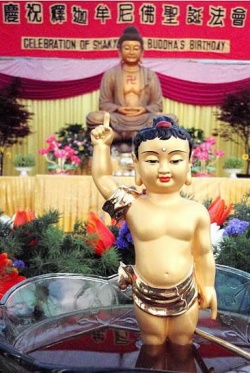Difference between revisions of "Han-kuang"
Jump to navigation
Jump to search
| Line 16: | Line 16: | ||
He was regarded as foremost among the forty-nine most [[virtuous]] {{Wiki|priests}} of [[Ta-hsing-shan-ssu temple]], the largest of the [[temples]] in [[Ch'ang-an]]. | He was regarded as foremost among the forty-nine most [[virtuous]] {{Wiki|priests}} of [[Ta-hsing-shan-ssu temple]], the largest of the [[temples]] in [[Ch'ang-an]]. | ||
| − | With [[Pu-k'ung]], he built [[Chin-ko-ssu]], or [Gold Pavilion Temple]], on [[Mount Wu-t'ai]] and made it a center of [[Esoteric Buddhism]]. | + | With [[Pu-k'ung]], he built [[Chin-ko-ssu]], or [[Gold Pavilion Temple]], on [[Mount Wu-t'ai]] and made it a center of [[Esoteric Buddhism]]. |
<poem> | <poem> | ||
{{R}} | {{R}} | ||
Latest revision as of 09:08, 4 January 2016
<poem>
Han-kuang
含光 (n.d.) (PY Hanguang; Jpn Ganko)
A priest of Esoteric Buddhism who lived in China in the eighth century.
According to one account, Han-kuang was a native of India.
A senior disciple of Pu-k'ung (Skt Amoghavajra), a patriarch of Esoteric Buddhism, he traveled to India and Sri Lanka with his teacher.
After returning to China, he lived at Pao-shou-ssu temple in Ch'ang-an, the capital, and assisted Pu-k'ung in various activities including the translation of Sanskrit Buddhist scriptures into Chinese.
He was regarded as foremost among the forty-nine most virtuous priests of Ta-hsing-shan-ssu temple, the largest of the temples in Ch'ang-an.
With Pu-k'ung, he built Chin-ko-ssu, or Gold Pavilion Temple, on Mount Wu-t'ai and made it a center of Esoteric Buddhism. <poem>
